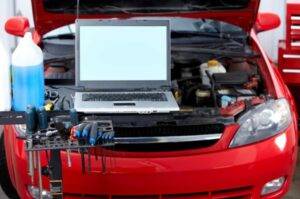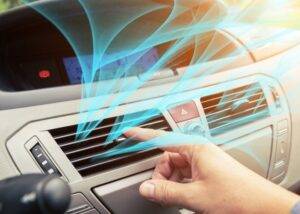Today, virtually every second car is equipped with ABC, whereas only a couple of decades ago not every car was so convenient. In an emergency, the driver would not press the pedal all the way to the floor, but apply intermittent braking. Actually, it is very difficult, because one’s foot reflexively or under stress rests on the very thing, the floor. Therefore, nowadays, the electronic capabilities of your four-wheeled friend are responsible in such a case.
The necessity of electronic ABS system in your car
The road is by and large unpredictable, you often have to take lightning-fast decisions, such as emergency braking, sudden diversions of suddenly appeared obstacle. This usually happens when you are travelling at high speed and a sudden obstacle appears ahead. It is dangerous to overtake, you should definitely slow down, but if you suddenly apply the brake pedal, without a safety system, the wheels and steering wheel will be blocked.
But that’s not the only problem; you can lose control of the car altogether, it becomes unstable and you may slip when braking. Even the most experienced drivers wouldn’t want to be in that position. The situation is completely different with electronic ABS, when you actively brake, the system does everything for you, the car is stable, the wheel is free, you easily bypass an obstacle.
What is electronic ABS? It has sensors that detect speed and control the rotation of the wheels, a pressure accumulator, an electronic control unit, an electric pump, an electromagnetic valve block.
It works like this – if a wheel slips, the pressure in the braking system is released, the wheel is unlocked, it no longer slips. Then, once again, pressure in the electronic ABS system starts to build up, the wheel locks and this occurs at frequent intervals throughout the braking distance.
ABS prevents the wheel from locking, thus reducing the length of the braking distance and making it possible to co-ordinate the vehicle’s handling. The control units of standard ABS are designed to average out, guaranteeing deceleration for all tyres. But some of the more expensive car companies have, so to speak, upgraded the system by adapting it to suit a particular wheel model. It’s a winning approach to using ABS.
Possible disadvantages of an electronic ABS system
ABS is first and foremost an electronic program, and like any program it calculates, more often than not, its options to some extent, not as the driver does. Hence will be the result. For example, if the road surface is of different character (asphalt, snow, ice) and any of wheels can be in such position, the system, to avoid slippage of wheels, weakens braking force.
It is important to understand that at low speed, not more than ten kilometres per hour, ABS doesn’t work, you should remember this moment to be always ready for it. You will not receive this equipment and “flamboyantly” turn at front drive, sharply bringing the back axis, it simply will not allow you to do it.
What is the Brake Assist System (BAS)?
To activate BAS, you have to depress the brake pedal forcefully otherwise it won’t justify itself. Not every driver, especially those with little experience is able to do, Brake Assist System is just the thing to control, or rather, to insure, this issue. In case the brake pedal is not pressed hard, BAS increases the ability of the system responsible for stopping the car, i.e. it helps with emergency and quick stop of the vehicle. The BAS electronic brake booster system is only installed if your vehicle has ABS.
Of course, the strength of the pedal depends on the driving experience, the more experienced driver, the less problems he has with both braking, and with driving in general. Such a system will be very useful for beginners, with little driving practice.
In technical terms, it is as follows: when the brake pedal is pressed hard, the piston rod in the pneumatic booster begins to move very quickly, and the speed sensor detects this and sends it to the control centre. The electromagnet then acts, increasing its action on the piston rod, resulting in more productive braking.
It has a kind of memory which distinguishes between how the driver brakes in an ordinary case and how he brakes in an emergency. By calculating different variants, it prevents the car from “going skidding”, and with everything mentioned above, ABS comes in time, but with Brake Assist System, braking distance is considerably shortened.
Why is the vehicle equipped with Electronic Stability Programme (ESP)?
This system is equipped with a number of sensors which prevent the front axle from skidding (drifting of the rear axle). The unit that controls it is located not only in the anti-locking system, but also in the Brake Assist and anti-skid system.
Thanks to all of the above, the ESP stability control unit finds the exact moment when the driver initiates his or her braking action. There will be differences between the actions of a front-wheel-drive and rear-wheel-drive vehicle here, but in each case safety is key.
Electrohydraulic braking system (Sensotronic Brake Control or SBC)
Finally, another recent advancement in brake control, which operates using a multitude of sensors that send it timely signals. By making a number of calculations, for example as to the type of pavement on a given road, the trajectory of the vehicle and the force with which a person applies the brake, the electrohydraulic braking system SBC optimises the work of the braking mechanism, thus avoiding sudden movements.
Conclusion
No matter what achievements may be made by modern electronics, nothing can replace a driver – experience, optimal concentration and observance of elementary rules during driving. A driver who is aware of this will save other road users from having to apply the emergency brakes and thereby protect themselves in the first place.






Comments are closed.